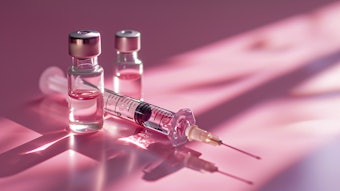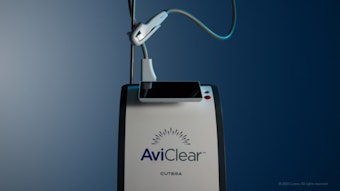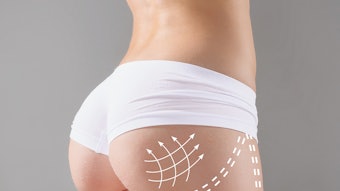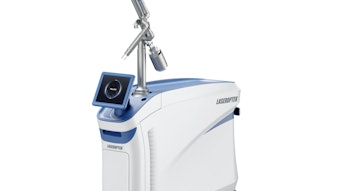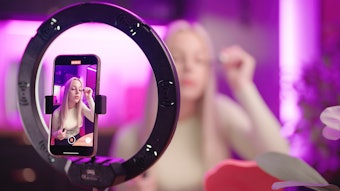
Operating a medical aesthetic practice is expensive, and profit margins can be precarious, particularly when a business is in its beginning stages. It’s no surprise, therefore, that practice owners are always on the lookout for ways to save money. Some do this by engaging in a practice known as parallel importation—importing non-counterfeit products from another country—which allows them to save money on brand name drugs. As tempting as it sounds, parallel importation is illegal, but the grounds on which these laws were passed are shifting.
The Basics
In many countries—including the United Kingdom, Ger-many, France, Sweden and Canada—the government regulates the cost of pharmaceuticals. These regulations were created to prevent drug manufacturers from engaging in price gouging for essential medications, but they also apply to pharmaceuticals used for elective cosmetic procedures, such as botulinum toxins and soft tissue fillers. In the United States, however, drug manufacturers can charge whatever they feel the market will bear for their products. As a result, drug prices in the U.S. are significantly higher than in countries where cost-control is practiced.
Parallel importation occurs when a licensed dealer in a country such as the U.K. or Canada legally purchases U.S.-produced drugs from the manufacturer at the cost-controlled rate dictated by their government, then turns around and sells those drugs to U.S.-based pharmacies and healthcare facilities for significantly less than the facility would pay had it ordered its products directly from the manufacturer. This is obviously a tempting offer for both parties to the transaction: The customer gets the product at a signifcant discount, and the seller—no longer bound by price controls since they are selling in the U.S.—can make a decent profit by marking the product up slightly. These are not cheap, counterfeit pharmaceuticals—the ones that U.S. Food and Drug Administration (FDA) officials spend a great deal of time seizing at the border—these are the same FDA-approved drugs that are sold in the U.S. Sounds like smart business, right? Not everyone agrees.
A Closer Look
U.S.-based manufacturers are allowed to sell their products to foreign distributors, who in turn are allowed to distribute the products to customers, and the products are FDA-approved. So why are U.S. businesses and citizens prohibited from seeking the best deal on pricing? This is a thorny issue that has been debated by Congress and the U.S. Supreme Court for years.
In 2013, the U.S. Supreme Court heard the case of Kirtsaeng v. John Wiley & Sons, Inc. This case involved a man from Thailand, Supap Kirtsaeng, who opened a business selling international editions of university textbooks, which are less expensive than the domestic versions, albeit identical. He procured the books from relatives abroad and then sold them to U.S. college students on eBay. The business was hugely successful for Kirtsaeng, but when textbook publisher John Wiley & Sons caught wind of the fact that he was doing this, the company sued him.
The Supreme Court ruled in favor of Kirtsaeng by a 6-3 majority, giving way to the interpretation that parallel importation is broadly legal. (It should be noted that Wiley’s reaction to this was not to lower the prices of their domestic editions, but rather to raise the prices of their international editions.)
Parallel importers of aesthetic drugs have relied on the Kistsaeng case to support their right to participate in the same practice. In May 2017, their case was bolstered with the U.S. Supreme Court ruling in Impression Products v. Lexmark International. In this case, Lexmark, a maker of toner cartridges, sued Impression Products for patent infringement on two counts. One, the company had purchased empty toner cartridges, filled them and resold them. Two, Impression Products purchased Lexmark toner cartridges abroad and then resold them into the U.S.
A Federal Circuit Court ruled in Lexmark’s favor, stating that when a patentee sells a product overseas, it does not exhaust its patent rights over that item. In the case of the used cartridges, the court ruled that a patentee can retain its rights on certain components of its products after the initial sale. Lexmark, therefore, was free to sue for infringement on both counts. The U.S. Supreme Court disagreed. It ruled with a 7-1 majority (Justice Gorsuch did not take part in the case) that once an authorized sale is made, patent protection ends.
In the case of the refilled toner cartridges, Justice John Roberts gave the following example to illustrate:
"Take a shop that restores and sells used cars. The business works because the shop can rest assured that, so long as those bringing in the cars own them, the shop is free to repair and resell those vehicles. That smooth flow of commerce would sputter if companies that make the thousands of parts that go into a vehicle could keep their patent rights after the first sale. Those companies might, for instance, restrict resale rights and sue the shop owner for patent infringement. And even if they refrained from imposing such restrictions, the very threat of patent liability would force the shop to invest in efforts to protect itself from hidden lawsuits. Either way, extending the patent rights beyond the first sale would clog the channels of commerce, with little benefit from the extra control that the patentees retain."
The Court’s ruling as to the second issue of selling products purchased abroad back into the U.S. was clear: “An authorized sale outside the United States, just as one within the United States, exhausts all rights under the Patent Act.”
So, is parallel importation now legal? The answer is still no. In 1987, the U.S. Congress passed the Prescription Drug Marketing Act, which prohibits anyone other than pharmaceutical manufacturers from importing pharmaceuticals into the U.S.—including drugs that were made in the U.S. and sold abroad. The bill was purportedly passed due to concerns that counterfeit drugs were making their way into the U.S. supply system. But it also protected the rights of manufacturers to set their prices in the U.S.
Several bills that would overturn this law and make parallel importation legal in the U.S. have been introduced in Congress, including H.R. 1245 (Affordable and Safe Pre-scription Drug Importation Act) in 2017. Thus far, none have passed.
Thorny Issues
Despite recent court rulings on textbooks and toner car-tridges, there are some unique legal issues when looking specifically at the re-importation of pharmaceuticals. For example, drug packaging. Prescription drugs are sold in packaging that includes inserts. These inserts demonstrate the product’s compliance with the standards set forth by the government of the territory in which the products are sold. If a pharmaceutical intended for sale in Ireland is sold to a customer in the U.S., the packaging will reflect the drug’s legal status in Ireland, not the U.S. Therefore, the drug is not FDA-approved even if it is the exact same product. In addition, the risk of counterfeit products making their way into the U.S. remains a concern of both the U.S. Congress and the FDA as they debate the issue of parallel importation.
Due to recent court rulings and legislative efforts, we may see a change to current laws in the future. Until that time, it is not legal for U.S.-based providers to import drugs meant for sale in other territories.
Alex R. Thiersch, JD, is a partner at ByrdAdatto Law Firm in Chicago, and founder and director of the American Med Spa Association (AmSpa), which was created to provide legal and business resources for medspas and medical aesthetic physicians throughout the United States. Contact him at [email protected].
Image copyright Getty Images

